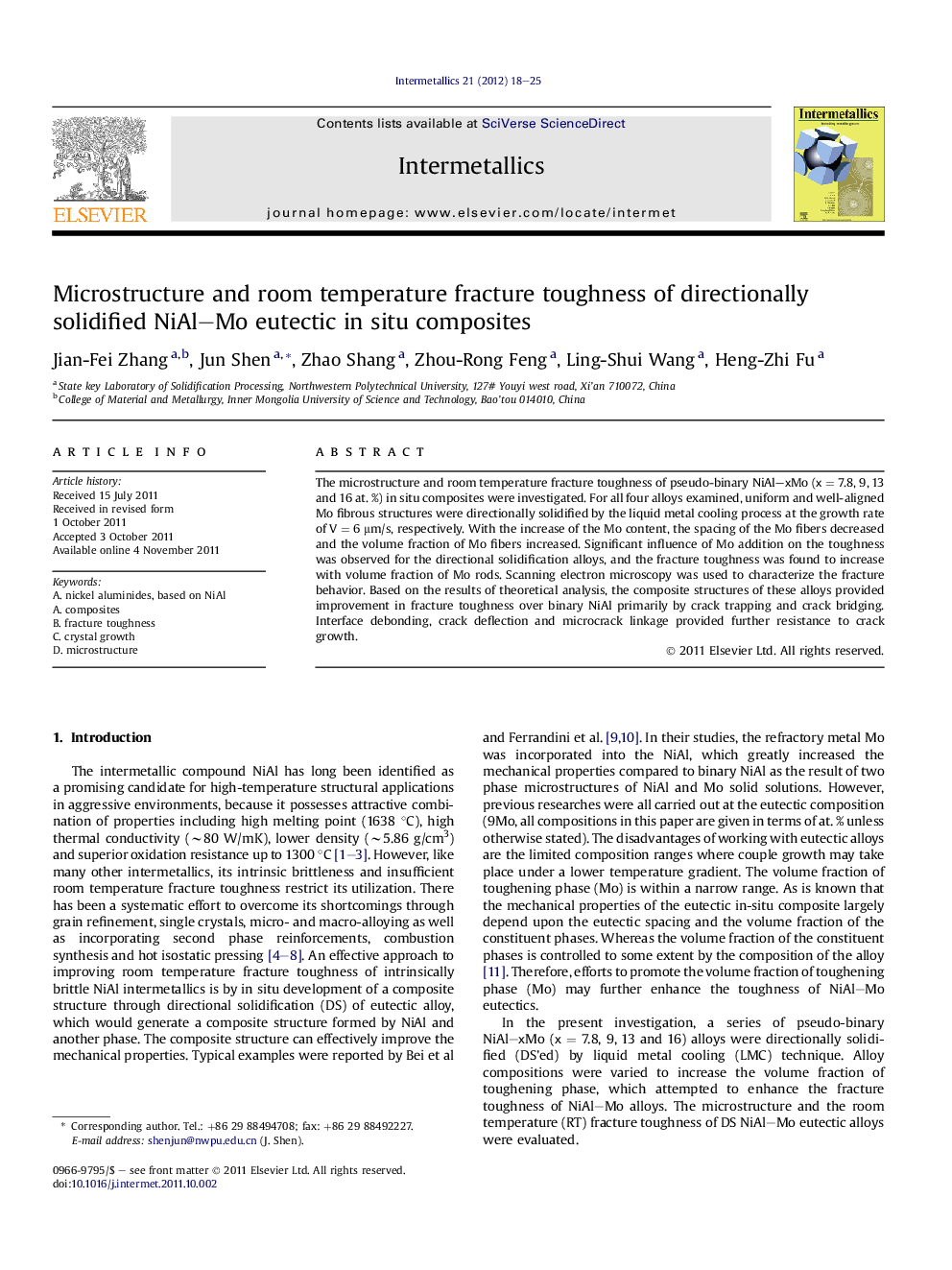| Article ID | Journal | Published Year | Pages | File Type |
|---|---|---|---|---|
| 1600618 | Intermetallics | 2012 | 8 Pages |
The microstructure and room temperature fracture toughness of pseudo-binary NiAl–ⅹMo (ⅹ = 7.8, 9, 13 and 16 at. %) in situ composites were investigated. For all four alloys examined, uniform and well-aligned Mo fibrous structures were directionally solidified by the liquid metal cooling process at the growth rate of V = 6 μm/s, respectively. With the increase of the Mo content, the spacing of the Mo fibers decreased and the volume fraction of Mo fibers increased. Significant influence of Mo addition on the toughness was observed for the directional solidification alloys, and the fracture toughness was found to increase with volume fraction of Mo rods. Scanning electron microscopy was used to characterize the fracture behavior. Based on the results of theoretical analysis, the composite structures of these alloys provided improvement in fracture toughness over binary NiAl primarily by crack trapping and crack bridging. Interface debonding, crack deflection and microcrack linkage provided further resistance to crack growth.
► Regular fibrous structure of the NiAl–Mo eutectics were produced. ► The relative volume fractions of the constituent phases of eutectic can be changed. ► The fracture toughness of NiAl–Mo composites were significantly improved. ► Crack trapping and crack bridging are the main toughen mechanisms.
